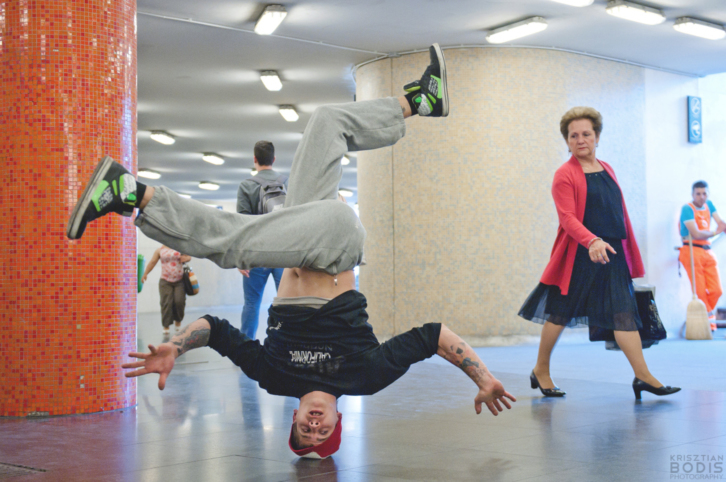A six- to eight-member team gathers in the Móricz underpass on Thursday afternoon. Just like at the gym, the boys start to change clothes, and put on wrist protectors and sweatpants. They start up some hip-hop background noise – bodies twist and the head spinning begins. The members of the Móricz crew take turns in jumping into the circle. Several passersby stop and gawk at their amazing movements.
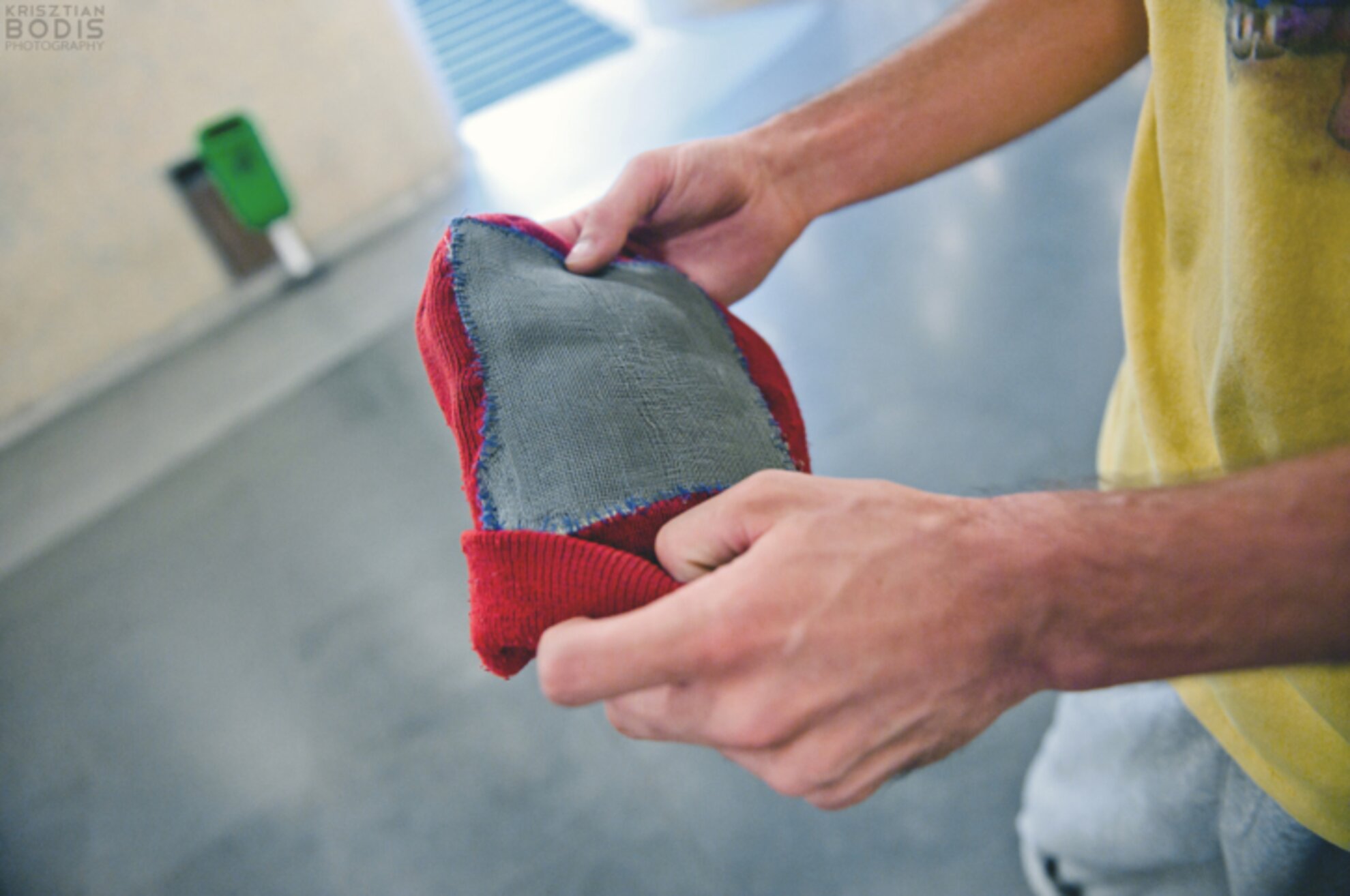
“This is art”Tamás, one of the members of the group, tells us that they come here two or three times a week and spend several hours dancing each time. “We like Móricz, it's clean, there's enough space, and there aren't many people either,” he said. For many years, Jászai Mari Square's underpass was the main base of breaking in Budapest, but it was unfortunately closed a year ago.
Tamás has been part of the head-spinning craze for 11 years now. “It was love at first sight. I think this isn't just sport, but this is art as well," he said. Many of them participate in competitions and performances, and sometimes they even appear at foreign events. Nonetheless, they still enjoy street dance the most. “This is a lifestyle, we do it for ourselves. We also welcome anyone who's interested in the genre.” They do not collect money, but sometimes they go out with a hat to Heroes' Square or Vörösmarty Square where there are lots of tourists.

Masters and students16-year-old Ronald started to learn the dance only a year and a half ago, but we can already see him do incomparable movements from dynamic dance steps to spinning on his shoulder. “I still go to school. My classmates are constantly asking me to show my newest tricks,” he said. He already performs at events, but most of the time he practices at Móricz with the group. “I learn the most from the others,” Roland explained.
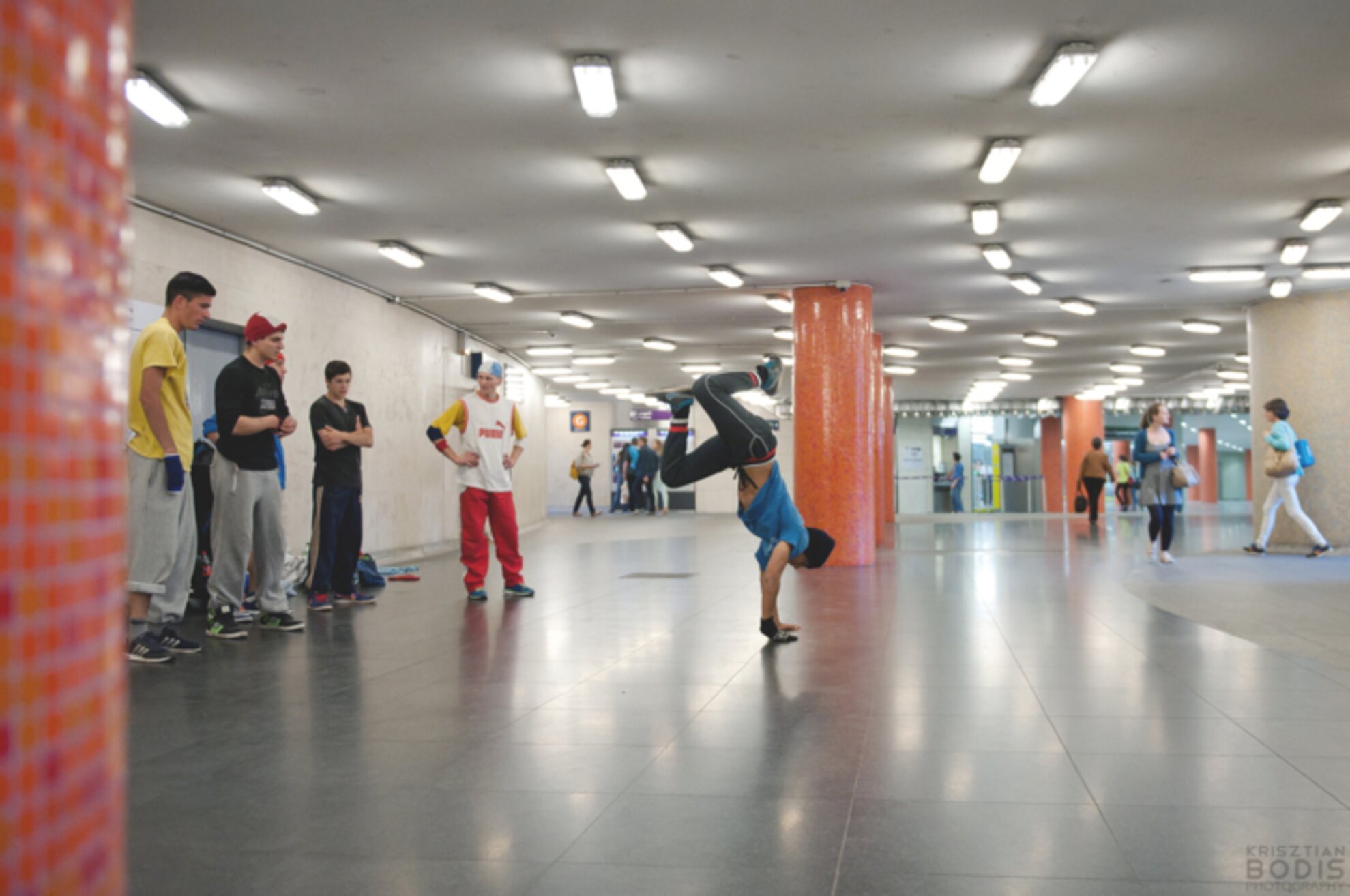
“We don't look down on each other”The hip-hop dancing couple Henriett and Thoby come here mostly to gather inspiration. “I learn a lot from the breakers, we've been friends for years. We don't look down on each other if someone knows a bit less,” Thoby said.
Henriett, a high-school student, danced in an association for a year. “What they do here is on a whole different level, I can learn from real professionals. In the association, there was constant rivalry, something that they don't have here. This isn't about performance, but having fun,” she explained. According to her, this is not the most popular dance sport among young people. “A lot of people try breaking, but most of them give up when they realize how hard it is".
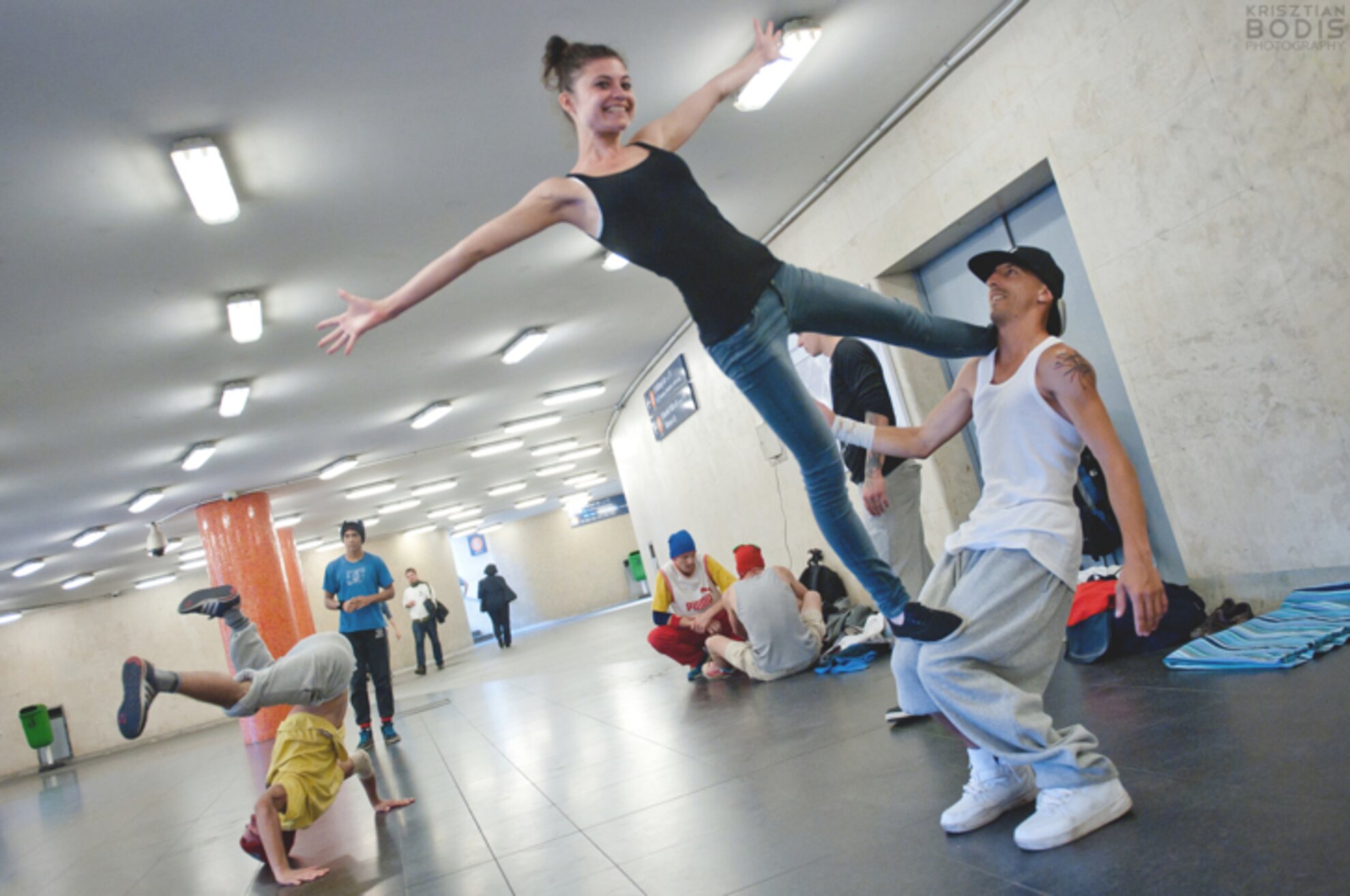
New York chicBreaking or B-boying first appeared in New Yorkin the '70s. The moves danced to a ¾ beat were developed by the black and Puerto Rican youth. The constantly evolving street dance spread like wildfire in America, and later across the whole world. Today it is still tremendously popular in Japan, Germany, France, Russia, and South Korea. The dance itself can be divided into several parts: there are the genre-introducing steps (toprock, footwork) and the gymnastic power moves, like various kinds of spinning (on the head, back, or shoulders).
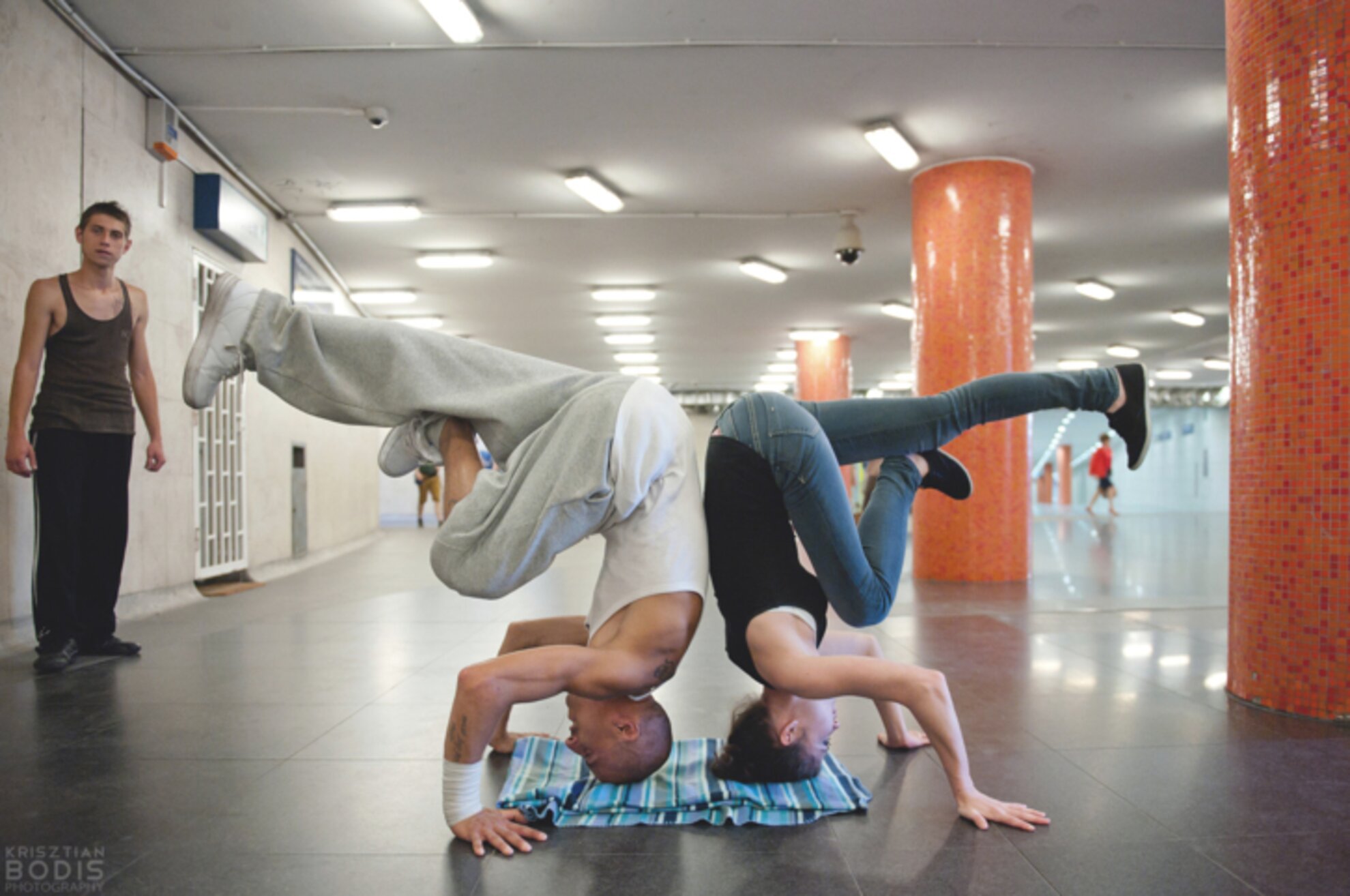
PioneersThe art of spinning on your head reached Hungary thanks to Miklós Fenyő, one of the greatest Hungarian rock singers. He made his genre-introducing
"Lépjük a lépcsőt" clip in 1983. It is worth watching the video not just for the nostalgia, but also to see how the dance developed from its beginnings to its current form.
Breaking spiked with acrobatic elements, and experienced its golden age at the end of the '90s and beginning of the 2000s, but seems to have faded away from public awareness. Naturally (and luckily), there still are people who gladly wear down their hair and back on the Móricz underpass tiles.
